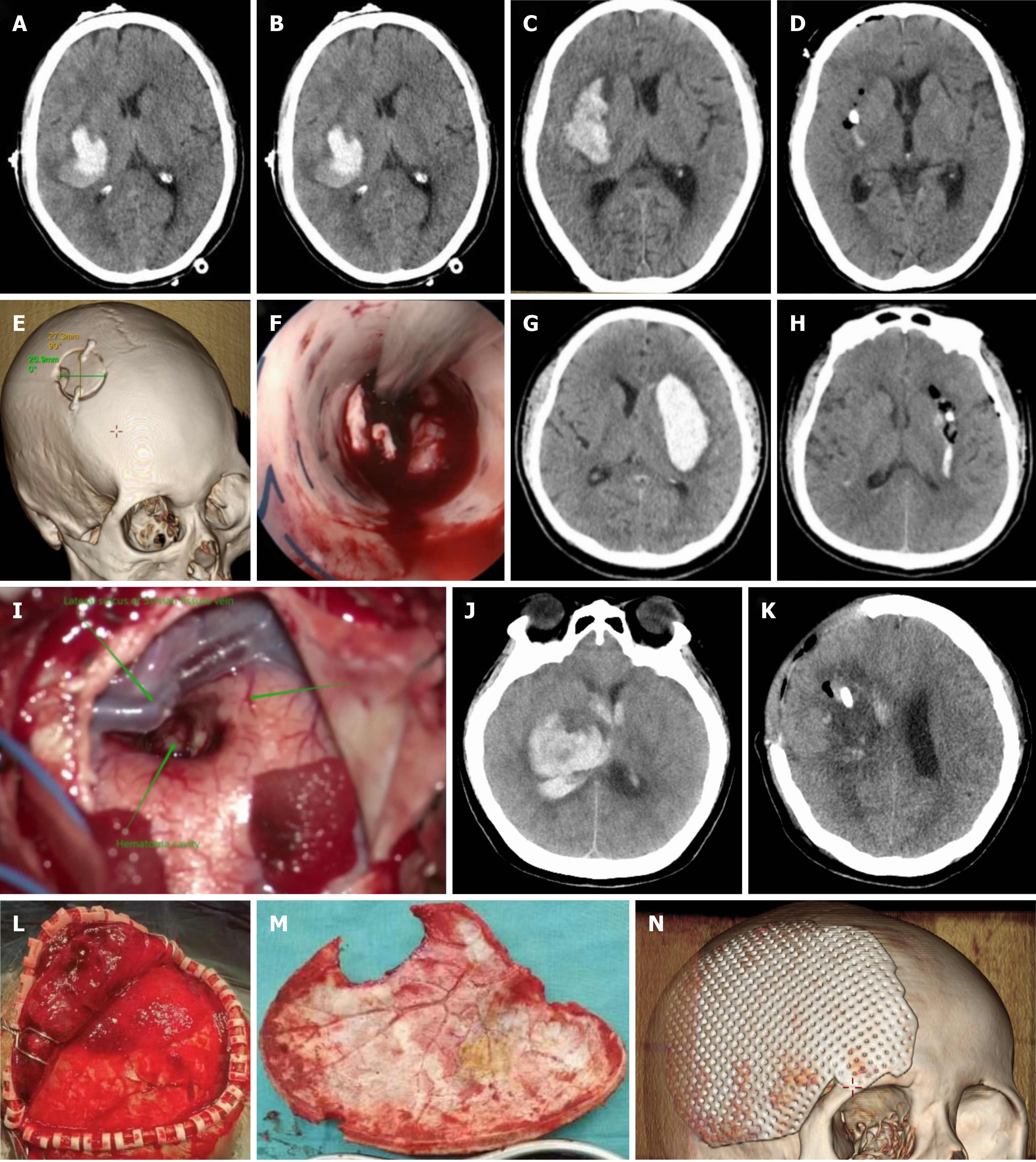Copyright
©The Author(s) 2024.
World J Radiol. Aug 28, 2024; 16(8): 317-328
Published online Aug 28, 2024. doi: 10.4329/wjr.v16.i8.317
Published online Aug 28, 2024. doi: 10.4329/wjr.v16.i8.317
Figure 1 Various surgical procedures for the treatment of spontaneous supratentorial cerebral haemorrhage.
A: Preoperative computed tomography (CT) of stereotactic puncture and drainage; B: Postoperative CT of stereotactic puncture and drainage; C: Preoperative CT of endoscopic surgery; D: Postoperative CT of endoscopic surgery; E: Small-bone-window CT three-dimensional imaging of endoscopic surgery; F: Endoscopic close illumination and high-resolution images of endoscopic surgery; G: Preoperative CT of standard craniotomy for intracranial haemorrhage; H: Postoperative CT of standard craniotomy for intracranial haemorrhage; I: Microscopic close-up magnification images of standard craniotomy for intracranial haemorrhage; J: Preoperative CT of decompression of intracranial haemorrhage combined with hematoma removal; K: Postoperative CT decompression of intracranial haemorrhage combined with hematoma removal; L: Microscopic medium-distance magnified image decompression of intracranial haemorrhage combined with hematoma removal; M: Skull removed by decompression of intracranial haemorrhage combined with hematoma removal; N: Postoperative CT after coming to the hospital for craniovertebral repair at 3 months after decompression of intracranial haemorrhage combined with hematoma removal.
- Citation: Xiao ZK, Duan YH, Mao XY, Liang RC, Zhou M, Yang YM. Traditional craniotomy versus current minimally invasive surgery for spontaneous supratentorial intracerebral haemorrhage: A propensity-matched analysis. World J Radiol 2024; 16(8): 317-328
- URL: https://www.wjgnet.com/1949-8470/full/v16/i8/317.htm
- DOI: https://dx.doi.org/10.4329/wjr.v16.i8.317













